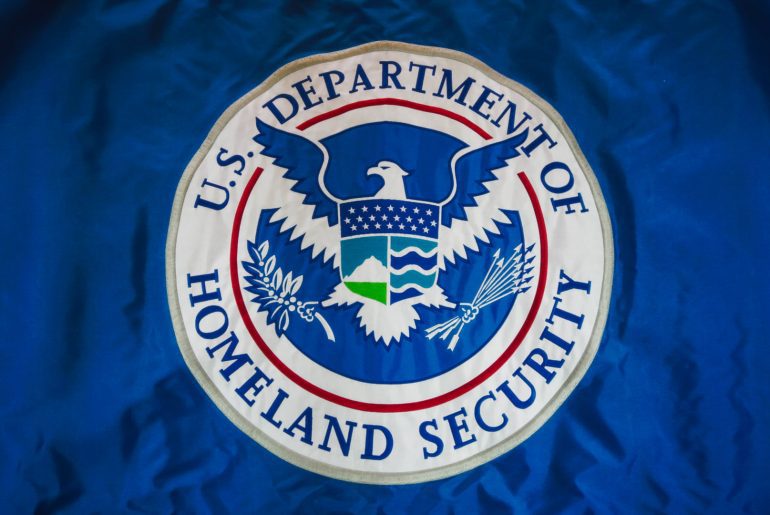- DHS forms Artificial Intelligence Safety and Security Board to address AI’s rapid growth.
- Board aims to ensure safe deployment of AI in critical US infrastructure.
- Comprised of 22 members from diverse sectors, including public officials and industry experts.
- Key tasks include advising stakeholders, crafting recommendations, and preempting AI-related disruptions.
- Immediate focus on actionable recommendations for safe AI adoption.
- DHS roadmap outlines initiatives to balance innovation with cybersecurity.
- Recent updates to Executive Order prioritize safe and trustworthy AI development.
- Government commitment reflects proactive risk management and resilience-building.
Main AI News:
The Department of Homeland Security (DHS) has taken a pivotal step in response to the exponential growth and integration of AI technologies across various sectors. In late April, DHS unveiled the inception of the Artificial Intelligence Safety and Security Board, highlighting its dedication to navigating the intricate landscape of AI implementation.
Scheduled for its inaugural assembly in early May, the Board is poised to embark on a mission vital to national interests: ensuring the safe and secure deployment of AI within the critical infrastructure of the United States. With the DHS Homeland Threat Assessment of 2024 underscoring the potential of AI to amplify cyber threats, particularly in the hands of adversarial nation-states like the People’s Republic of China, the Board’s mandate becomes paramount in safeguarding economic security and critical infrastructure.
In the words of U.S. Secretary of Homeland Security Alejandro N. Mayorkas, “Artificial Intelligence is a transformative technology that can advance our national interests in unprecedented ways. At the same time, it presents real risks — risks that we can mitigate by adopting best practices and taking other studied concrete actions.“
Comprised of 22 distinguished members spanning public and private sectors, including representatives from software and hardware industries, critical infrastructure operators, public officials, civil rights advocates, and academia, the Board embodies a diverse array of expertise necessary to address multifaceted challenges.
Central to its agenda are several key objectives:
- Providing counsel to the Secretary, critical infrastructure stakeholders, and the broader public.
- Crafting recommendations to guide responsible AI integration among critical infrastructure entities.
- Formulating strategies to preempt and mitigate AI-related disruptions to vital services.
- Assisting DHS in preempting evolving threats posed by hostile nation-state actors.
With an immediate focus on actionable recommendations for the safe adoption of AI, the Board aims to facilitate the seamless implementation of these guidelines within the critical infrastructure community.
Moreover, the Board intends to establish a collaborative platform to foster information exchange among stakeholders, DHS, and AI leaders, thereby fortifying the nation’s cybersecurity posture.
The establishment of the Artificial Intelligence Safety and Security Board aligns with broader governmental initiatives aimed at harnessing AI’s transformative potential while upholding cybersecurity imperatives. This initiative is part of a comprehensive strategy outlined in the DHS’s AI roadmap, which delineates projects aimed at bolstering homeland security while safeguarding individual privacy and civil liberties.
In tandem, recent updates to the Executive Order on the Safe, Secure, and Trustworthy Development and Use of Artificial Intelligence underscore the government’s commitment to proactive risk management in AI deployment. Through collaborative efforts across federal agencies, including the development of AI safety and security guidelines tailored to critical infrastructure, the government endeavors to foster a resilient and secure AI ecosystem.
As the DHS takes proactive steps to navigate the evolving AI landscape, the establishment of the Artificial Intelligence Safety and Security Board stands as a testament to the government’s unwavering commitment to safeguarding national interests in the digital age.
Conclusion:
The establishment of the Artificial Intelligence Safety and Security Board by the DHS signifies a proactive approach to managing the risks and opportunities presented by AI technology. This initiative underscores the government’s commitment to fostering innovation while prioritizing cybersecurity and resilience in critical infrastructure. Market stakeholders should recognize the importance of aligning AI initiatives with best practices outlined by the Board to navigate evolving cybersecurity challenges effectively.

